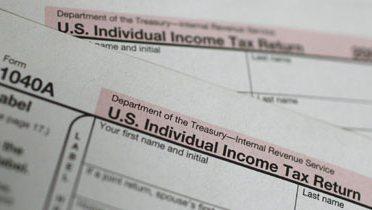Many American households have accumulated very little wealth in general and little contingency savings in particular. Lack of access to assets in a time of emergency can cause material hardship and can turn what might have been a minor economic issue, such as a car repair or a spell of unemployment, into a major economic setback. However, there are opportunities to address the lack of contingency savings in US households, and the annual windfall that comes from the income tax refund is a particularly compelling one. Concerns about the level of saving and the possibilities raised by large refund checks have drawn the interest of policy makers and researchers, motivating efforts to encourage households to save part or all of the refund. Several previous papers, noted below, have examined ways to encourage households to save portions of refunds or to save at the time of tax filing. That literature has reported mixed success.
This article provides new evidence from a large-scale experiment examining how public policies could affect household saving out of income tax refunds. In the experiment, households that filed income tax returns with a preparer, received refunds, and chose to receive the refunds electronically were randomized into nine different groups: a control group and eight treatment groups. The eight treatment groups were exposed to different combinations of four saving prompts—none, general saving, retirement saving, or emergency saving—and two suggested savings allocations of the refund (25% and 75%). Members of the control group received neither a saving prompt nor a suggested allocation.
The goal of the experiment is to examine ways to help low- and moderate-income households build contingency savings. The interventions are based on strategies, especially priming and anchoring, informed by behavioral economics (Epley and Gilovich 2006; Kahneman 2003; Tversky and Kahneman 1974). Because the experiment is built into a preexisting, widely used platform for tax filing, the interventions are potentially scalable and cost effective. We use contributions directly deposited to a savings account as a proxy in measuring efforts to build contingency savings.
Our central results are that higher suggested savings allocations generate higher allocations to savings accounts, but the effects are small. Moreover, the various prompts reminding people of different reasons to save generally have no effect or have a negative impact.
Three sets of empirical results support these findings. First, treatment raised the probability of contributing to a savings account (i.e., the probability of putting the whole refund in a savings account or of splitting the refund into more than one account) and the amount contributed to a savings account. About 7.2% of control-group members contributed at least part of the refund to a savings account. In comparison, 9.8% of the treatment groups contributed at least part. The average amount contributed to a savings account was $73 among control-group members and $93 among treatment recipients. The average savings account contribution was $393 among refund splitters in the control group and $778 among refund splitters in the treatment groups. The savings-allocation results parallel 2016 3 the refund-splitting results: higher suggested savings allocations increased saving behavior, but the prompts for reasons to save did not increase saving.
Second, treatment slightly raised the probability of splitting the refund between a checking and a savings account. The probability of splitting rose from an extremely low 0.4% in the control group to an average of 1.3% in the eight treatment groups. The saving prompts had a negative effect on the likelihood of splitting, yet the likelihood of splitting grew with the suggested amount of the savings allocation, and the relationship is statistically significant.
Third, among refund splitters, the allocation suggestions had an even more substantial effect. The share of the refund dedicated to a savings account was 16% among refund splitters in the control group, 34% among refund splitters shown the suggestion to save 25% of the refund, and 64% among refund splitters shown the suggestion to save 75% of the refund.
Our results confirm and extend previous findings, but they also raise new puzzles. The positive impact of the suggested savings allocations extends the scope of the idea embedded in previous work: the power of suggestion strongly influences saving behavior (see, e.g., Madrian and Shea 2001; Karlan et al. 2010). In contrast, the absence of a positive effect from the saving prompts is not intuitive; it is unclear why reminding people of specific reasons to save should have a smaller impact on saving than does not reminding them. We do not resolve that issue here, but we believe that the result, if replicated in future research, may provide information important to understanding better the motivations for saving behavior. Hence, the result may ultimately enable the design of more effective saving policies.




